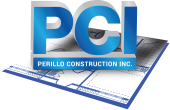Building recertification is a vital requirement for property owners, especially in regions like South Florida, where 25-, 30-, and 40-year inspections are legally mandated. These inspections ensure that aging structures remain safe and compliant with evolving municipal codes. For many owners, though, the process can feel overwhelming—particularly when balancing tenant needs, engineering assessments, and potential repairs all at once.
To help ease the process, it’s important to understand what recertification entails and how to proactively prepare. With thoughtful planning, property owners can minimize costly delays, ensure safety, and maintain the long-term value of their investments.
Know the Timeline and Requirements
Each municipality may have slightly different rules, but the general recertification timeline starts once a building reaches 25 or 30 years of age. At this point, local officials will issue a formal notice requiring the owner to complete both a structural and electrical inspection within a set timeframe—usually 90 to 180 days. After this first deadline, recertification is required every 10 years. Failure to comply can result in penalties, citations, and even forced vacating of the property.
Property owners should act immediately upon receiving the notice. Delays in scheduling inspections or finding qualified engineers can create a backlog that jeopardizes your ability to meet the deadline.
Select the Right Inspection Team
The recertification process requires two separate reports: one assessing the structural integrity of the building, and another evaluating the electrical systems. Both reports must be prepared and signed by licensed engineers in their respective disciplines.
Choosing engineers who are familiar with your local jurisdiction can be extremely helpful. These professionals understand what city reviewers are looking for and can help identify issues before they escalate. It’s also wise to involve an experienced contractor early—especially one who understands recertification-related repairs and permitting procedures. This will make the post-inspection process far more efficient if repairs are needed.
Do a Preliminary Walkthrough
Before the official inspections begin, conduct an internal walkthrough with your property management or maintenance staff. Look for common red flags such as cracks in concrete, water intrusion, corroded railings, or flickering lights. Noting these issues early allows you to prepare for conversations with your engineers, and in some cases, may give you time to handle minor problems before the formal reports are filed.
Organize Building Documentation
One of the most commonly overlooked parts of recertification prep is documentation. Engineers and city officials often request historical data to better understand the building’s condition. Having your paperwork ready can reduce delays and improve inspection outcomes.
This is a good time to compile your construction drawings (if available), records of past inspections and repairs, contractor warranties, and service logs for major building systems. Include recent permits for work done on elevators, roofs, fire systems, or electrical upgrades, as these will show that the building is being responsibly maintained.
Communicate with Tenants and Stakeholders
Clear communication with tenants, building staff, and stakeholders can prevent frustration and reduce liability. Let everyone know when inspections are scheduled, what areas will need access, and whether any services (like electricity or elevator use) may be interrupted. If inspectors need to enter individual units, be sure to give sufficient notice and coordinate entry protocols.
Your tenants will appreciate being informed, and you’ll avoid last-minute scheduling conflicts that could delay your inspection process.
Be Prepared for Repairs
After your inspections, your engineers will issue a report outlining any deficiencies that must be addressed to bring the building into compliance. These might include structural repairs such as concrete restoration, stairway reinforcement, or balcony repairs, as well as electrical upgrades like panel replacement or lighting corrections.
If repairs are needed, work with a licensed contractor who is experienced in recertification work. Ideally, they should be able to help with permitting, documentation, and scheduling re-inspections within the required time window.
Key advantages of having a trusted contractor lined up early include:
- Quicker turnaround for emergency or time-sensitive repairs
- Reduced downtime for building systems
- Fewer permit delays
- Accurate documentation for city resubmission
Start Early and Stay Ahead
Many owners wait until a notice arrives to begin preparing—but that’s often too late. Starting the process six to twelve months in advance gives you time to assemble your team, budget for repairs, and ensure all paperwork is in order. Early preparation also gives you more flexibility to negotiate costs and timelines with your contractors.
Partner with a Recertification Specialist
If you’re approaching your building’s inspection deadline and want to make sure every box is checked, Perillo Construction can help. Their team has extensive experience guiding commercial and multifamily property owners through the entire recertification process—from coordination with engineers to efficient, code-compliant repairs. Contact them today to protect your property and meet your deadlines with confidence.

